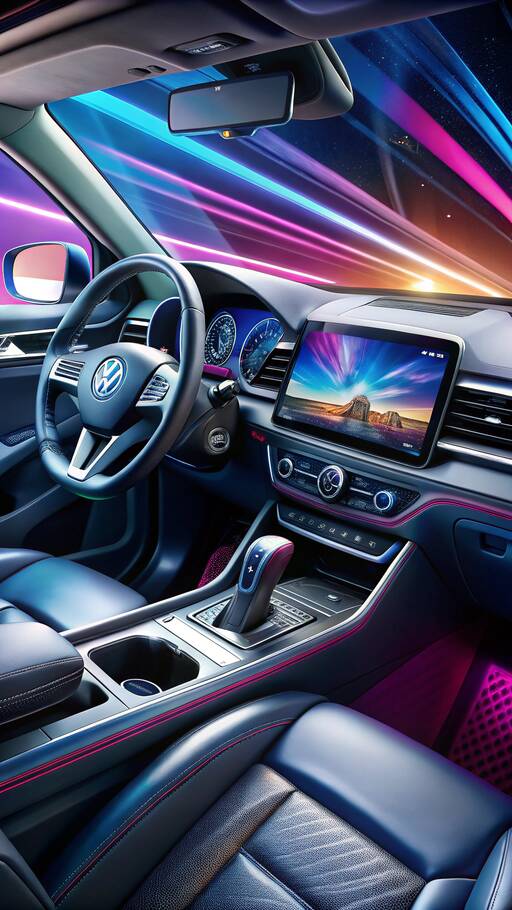
The Tiguan's powertrain remains a turbocharged 2.0-liter four-cylinder but now produces 201 horsepower, up from 184. While torque remains at 221 lb-ft, the vehicle is lighter by 170 pounds, enhancing fuel efficiency. Towing capacity also sees an increase in AWD models.
Although global markets have hybrid versions, North America won't see them at launch. VW plans to introduce hybrid options based on market demand and future regulations.
The 2025 Tiguan shifts from its wagon-like appearance to a more SUV-centric design. With a slightly longer wheelbase, it's 2 inches shorter but boasts a wider and bolder look, perfect for American roads.
- Lighting: Features an illuminated VW logo and LED bars.
- Colors & Wheels: New colors, optional black roof on R-Line trims, and up to 20-inch wheels.
The Tiguan's cabin is more luxurious with enhanced materials like walnut trim and quilted leather seats. Practical changes, such as a moved gearshift, add space for a deep center console with a wireless charger.
- Infotainment: A standard 12.9-inch screen, expanding to 15.0 inches on higher trims.
- Atmospheric Modes: New rotary dial for drive and mood settings.
North America's Tiguan drops its cramped third row to offer a more spacious two-row vehicle, enhancing cargo space.
Safety is improved with the new electrical architecture, incorporating standard IQ.Drive features like adaptive cruise control and emergency assist. It also adds four new airbags, ensuring top safety ratings.
Four trims are available: S, SE, SE R-Line Black, and SEL R-Line. Built in Mexico, the 2025 Tiguan will hit North American markets by summer 2025, with pricing expected to be within the current $30,000-$40,000 range.
Volkswagen's 2025 Tiguan combines a stronger design, more power, and advanced tech to remain competitive, even without hybrid offerings, reflecting VW's strategic response to the current SUV market dynamics.